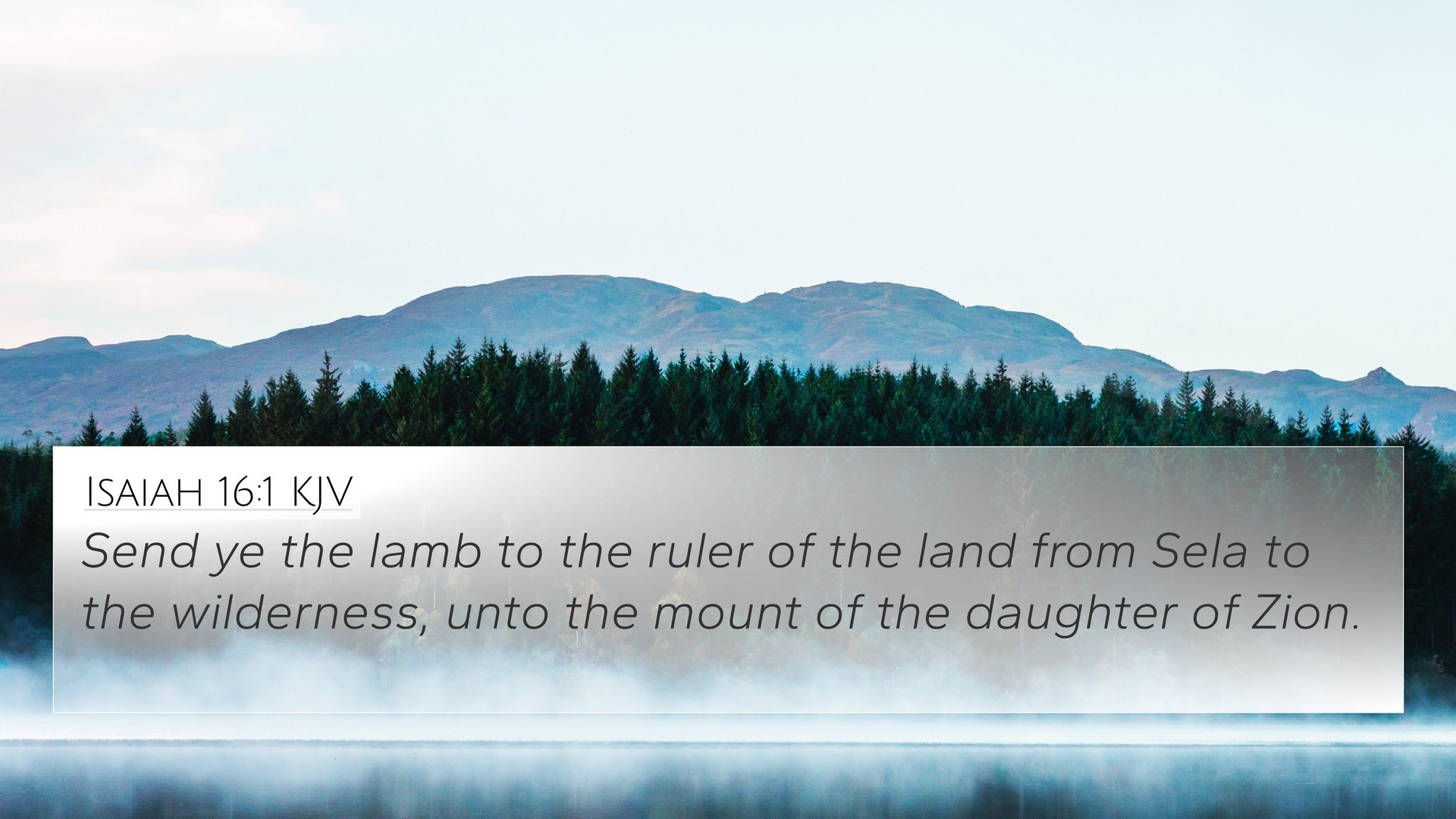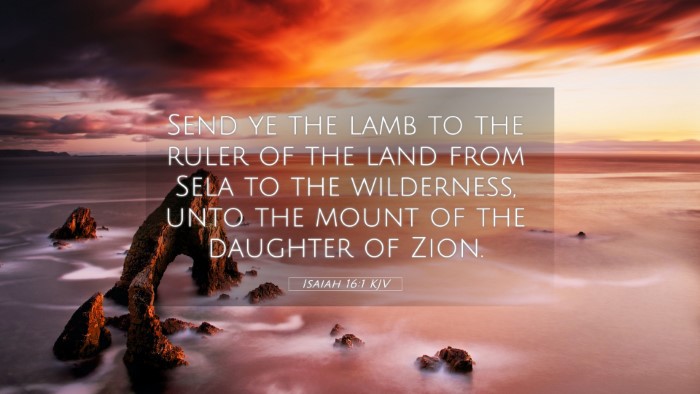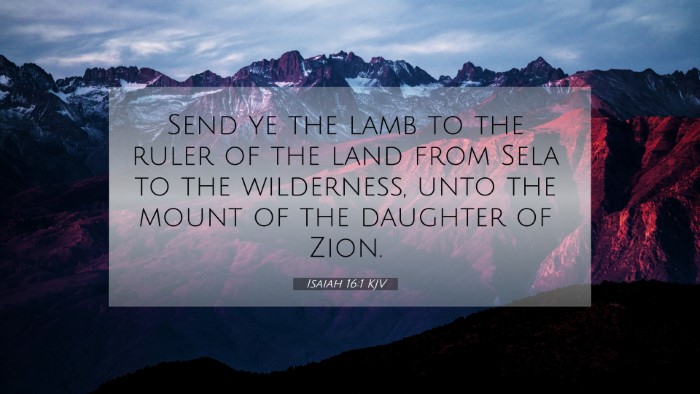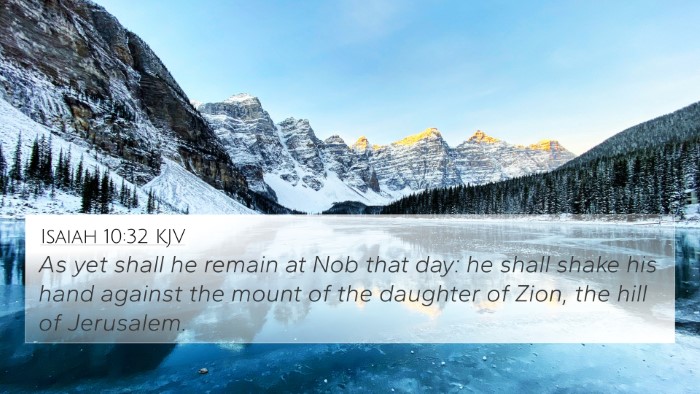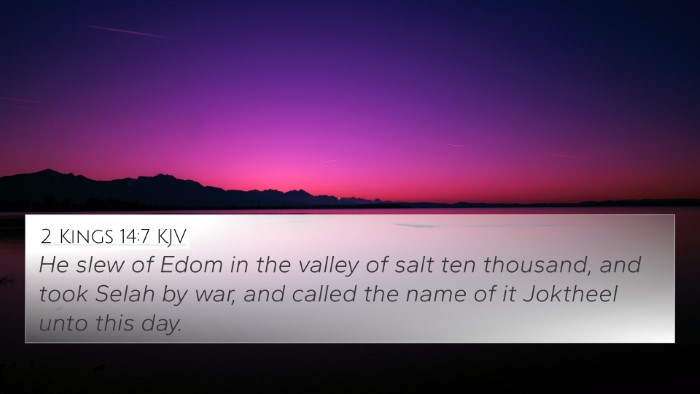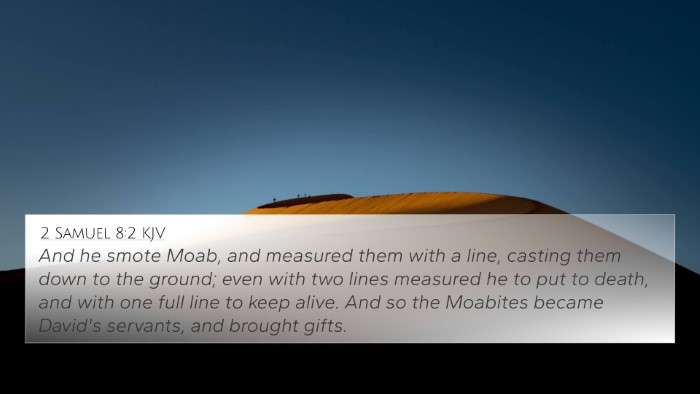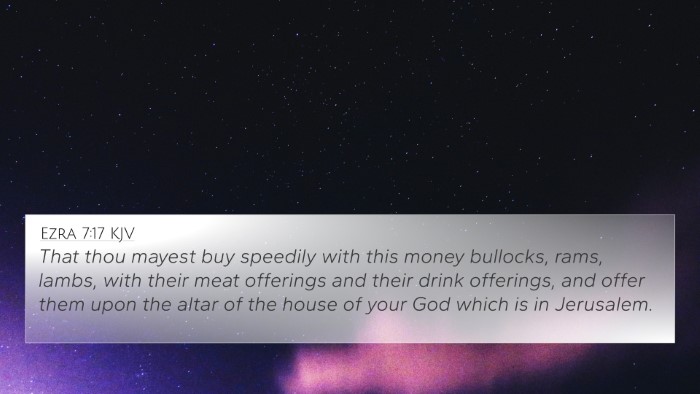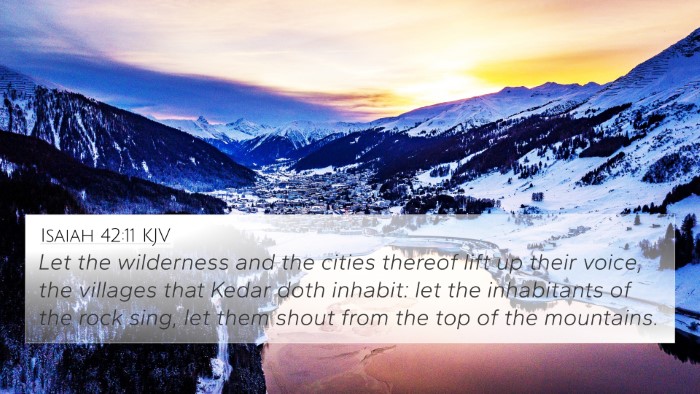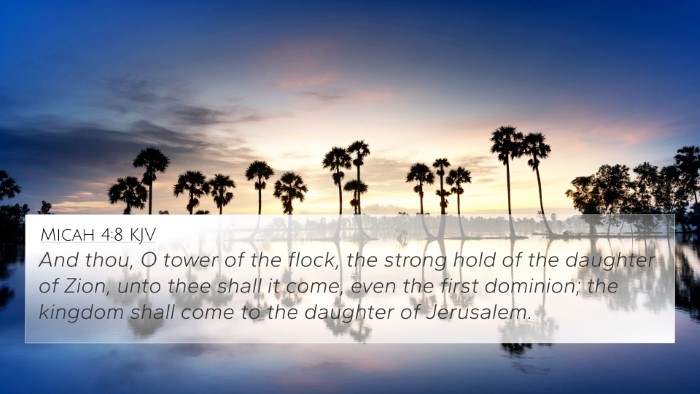Understanding Isaiah 16:1
Isaiah 16:1 states: "Send the lamb to the ruler of the land from Sela to the wilderness, unto the mount of the daughter of Zion." This verse is rich in imagery and prophetic meaning, reflecting themes of provision, submission, and God's sovereignty over nations.
Commentary Insights
Matthew Henry's Commentary
Henry emphasizes the appeal from Moab to Judah. The "lamb" symbolizes a tribute that Moab seeks to send to Jerusalem to seek refuge and favor. This represents an acknowledgment of God’s chosen people and the power of Zion. The reference to "mount of the daughter of Zion" highlights not only the geographical significance but also the spiritual eminence of Jerusalem as God's dwelling place.
Albert Barnes' Notes
Barnes notes that this call from Moab indicates their dire circumstances and need for assistance. The "lamb" can be seen as both a literal offering and a metaphor for humility and appeal for mercy. He elaborates that this verse points to a time when Moab would need to bow before Judah—marking a shift in political and spiritual dynamics.
Adam Clarke's Commentary
Clarke provides insight into the historical context, suggesting that sending a lamb indicates a form of allegiance and recognition of Judah’s superiority. The verse serves to highlight the desperate plight of Moab, where Sela (a city of refuge) stands as a symbol of hope amidst turmoil. Clarke further discusses the theological implications concerning God's continuing care for His people, even in desperate times.
Key Themes
Isaiah 16:1 encompasses several key themes:
- Divine Sovereignty: God’s control over nations and affairs.
- Subjugation and Recognition: Moab acknowledging Judah’s power.
- Symbolism of Innocence: The lamb as an offering and a plea for mercy.
- Hope and Refuge: The role of Zion as a safe haven.
Bible Verse Cross-References
This verse connects to several other scriptures that deepen its understanding:
- Micah 5:2: Prophecy regarding Bethlehem as the birthplace of the ruler.
- Psalm 76:2: God is known in Judah; His name is great in Israel.
- Jeremiah 48:20-21: Prophecies concerning Moab's downfall and need for consolation.
- Isaiah 1:18: Invitation to reason together; God's readiness to forgive.
- Isaiah 9:6: Prophecy about the Messianic ruler who will govern.
- Isaiah 11:10: The root of Jesse will stand as a banner for the peoples.
- Isaiah 14:29: Prophecy regarding the burden of the Philistines, also touching neighboring states like Moab.
- Luke 19:38: References to the king of Zion, showing the fulfillment of Isaiah’s prophecies in Jesus.
- Romans 9:25-26: God calling a people that were not His; echoing the mercy extended to the Gentiles.
- Revelation 21:2: The new Jerusalem depicted as a bride, connecting back to Zion.
Cross-Referencing Biblical Texts
By examining Isaiah 16:1 through cross-referencing with these verses, one can gain a fuller understanding of its implications in the broader biblical narrative:
- Tools for Bible Cross-Referencing: Utilize methodologies like thematic studies or chronological listings.
- Bible Concordance: A valuable resource for finding related verses and themes.
- Bible Cross-Reference Guide: Helps track connections across different books.
- Cross-Reference Bible Study: Engaging deeply with associated passages reinforces understanding.
- Identifying Connections between Old and New Testament: Notably, Isaiah's prophecies lead to New Testament fulfillment.
- Comparative Study: Analysis of similar themes across various biblical authors enriches comprehension.
Conclusion
Isaiah 16:1 serves as a profound reminder of the interconnectedness of the biblical text. Through the lens of various commentaries, one sees layers of meaning, from historical context to prophetic significance. Understanding this verse encourages believers to engage in comprehensive Bible study that cross-references themes and narratives, offering holistic insights into their faith and the nature of God’s kingdom.
